We often hear the terms “microprocessor” and “integrated circuit”, but what are the differences between them?
A microprocessor is a computer chip that can be inserted into a larger device to control it.
An integrated circuit, on the other hand, is made up of many different components – such as resistors, capacitors, inductors and more.
All of these built together on a single silicon chip. It’s important for engineers to know how these two devices differ in order to build better products!
An Integrated Circuit: Definition
An integrated circuit is a miniaturized electronic circuit that has been manufactured in one piece on a semiconductor chip. The first integrated circuits were created in the 1970s, and they have revolutionized electronics ever since.
The essential components of an integrated circuit are transistors, resistors, capacitors, and diodes. When packing the components into a tiny area, engineers may create complicated devices including microprocessors and digital signal processors.
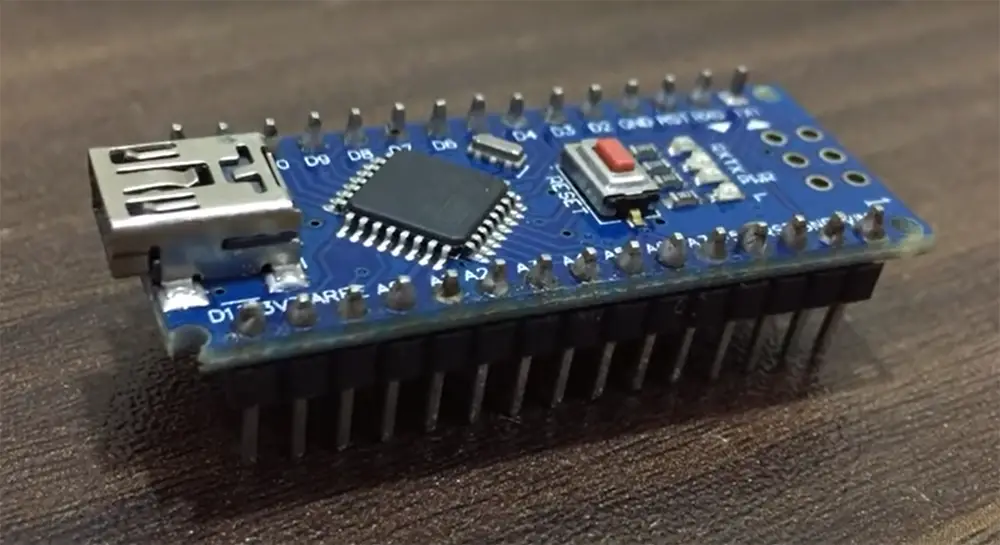
Integrated circuits are also used to create memories, displays, and other electronic systems. They can be found in everything from cell phones to cars to spacecraft.
Despite their ubiquity, integrated circuits are not without problems. Their small size makes them vulnerable to damage from electrostatic discharge, and they are sensitive to heat [1].
Microprocessor: Definition
A microprocessor stands for a type of integrated circuit that serves as the central processing unit of a computer. It performs the calculations and logic operations required to run software programs.
Microprocessors are made up of millions of transistors, resistors, capacitors, and diodes. By packing these components into a small area, engineers can create complex devices such as microprocessors and digital signal processors.
Microprocessors are used in virtually all desktop and laptop computers. They are also found in many other types of electronic equipment, such as cell phones, tablets, and cars.
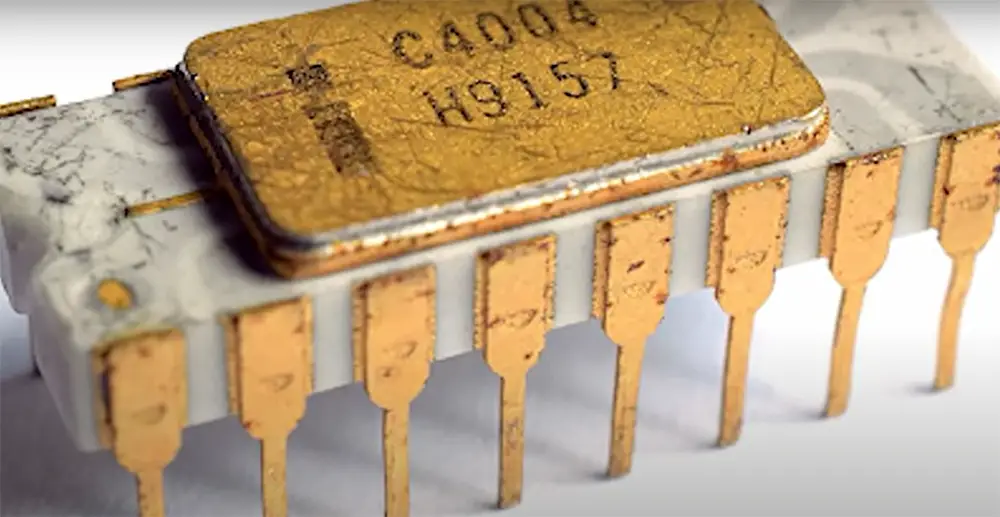
Microprocessor vs. Integrated Circuit in Electronics Design
In electronics design, you’re almost sure to encounter integrated circuits. Working with a microprocessor on occasion might be a Herculean task. Designing with a microprocessor is not the same as designing with traditional integrated circuits.
When working with a microprocessor, you need to be aware of the special considerations that come into play.
First and foremost, the microprocessor is designed for one purpose: to run software applications. If you’re not careful, you can easily overwhelm it with data or requests and cause it to freeze or lock up. You also have to take care when choosing clock frequencies and operating voltages; if they’re too high or low, the chip will likely malfunction.
In contrast, integrated circuits are general-purpose devices that can be used for a variety of purposes. As such, they don’t require as much attention when selecting parameters. However, because there are so many different types of integrated circuits available, it’s important to be familiar with their capabilities before you start a project.
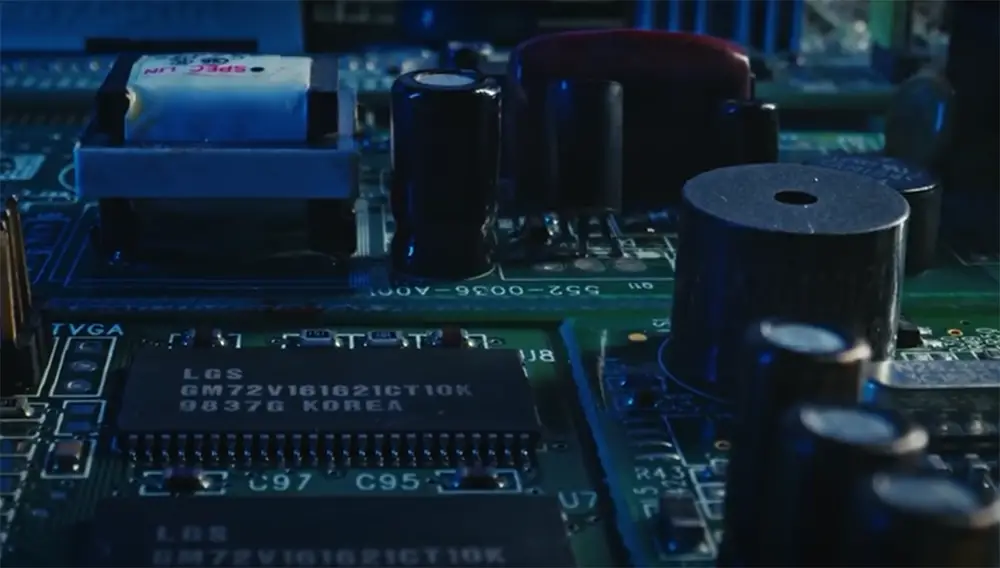
Repeat the same mistakes in a design with a microprocessor, and you’ll almost certainly run into numerous problems during the prototype. Microprocessors are known for being power-hungry gadgets that generally operate at hundreds of Hertz or Gigahertz frequencies.
It should go without saying that the voltage supplied to a microprocessor is important. The stability of the microprocessor may be negatively influenced by ripples or a rapid drop in voltage. Another source of EMC risk is the addition of high-speed data connections to a microprocessor. The fast data transmission might generate EMI, which can interfere with adjacent sensitive components.
When you use a microprocessor to design with and then install the correct PCB layout and analysis program, it’s critical not to make any mistakes [3].
Summing up, a microprocessor contains all of the components found in an integrated circuit – a CPU, memory, input/output ports, etc. – but it also includes its own non-volatile storage for programs (ROM) and data (RAM).
This allows users to run software on their computers without needing additional hardware devices. An integrated circuit can’t function independently because it doesn’t have any program instructions or other information stored inside itself.
How Integrated Circuits and Microprocessors Advance Embedded Systems?
Microprocessors and integrated circuits provide an easier way to read and write data from your system’s memory, as well as helps improve performance. This gives embedded systems with these chips more computing power than they would have without them!
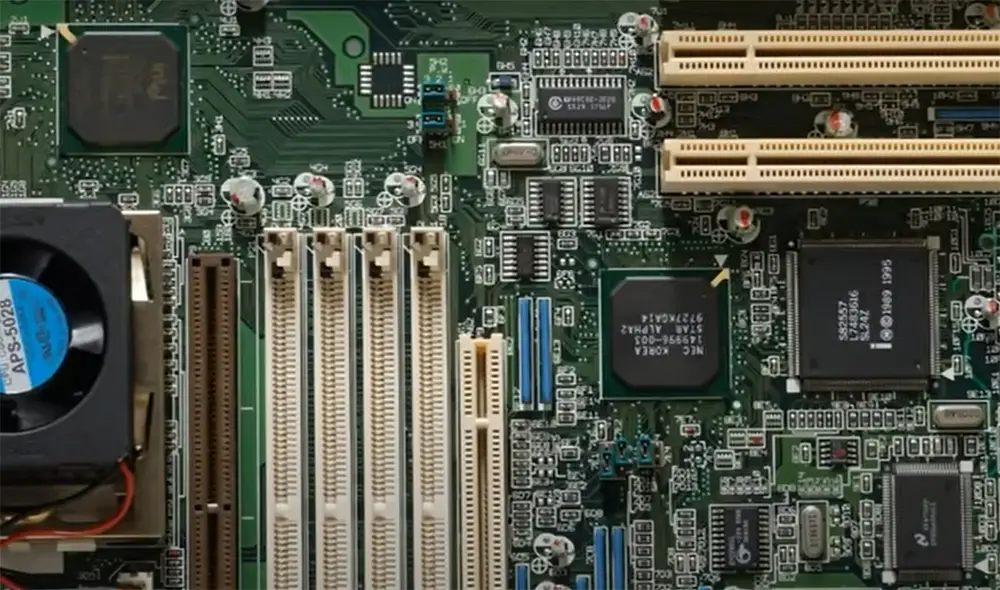
Integrated circuits allow devices to be smaller and more lightweight, while microprocessors give them better performance.
In order to fully understand the difference between these two, let’s take a look at an example:
An integrated circuit may be used in a digital thermometer. The chip would control all of the readings and calculations that need to be done, as well as outputting them to a display or storage device. In this application, the tiny size of the integrated circuit is key – it allows for easy installation within the thermometer housing.
A microprocessor could also be used in a digital thermometer, but its bulkier size would require more space within the housing. A microprocessor can also run more complex applications than an integrated circuit. For example, it could be used to calculate average temperatures over time or compute Fahrenheit-to-Celsius conversions.
In general, microprocessors are better suited for more demanding tasks, while integrated circuits are ideal for smaller applications that don’t require as much computing power. However, with the continued advancement of embedded systems technologies, it’s likely that we will see more and more devices incorporating both microprocessors and integrated circuits!
Troubleshooting Embedded Systems with Integrated Circuits
Microprocessors and integrated circuits are both important components of embedded systems, but they have different functions:
- A microprocessor is the main processing unit of a computer system. It reads and executes instructions that are stored in memory;
- An integrated circuit, on the other hand, is a collection of electronic components that are manufactured together on a single chip;
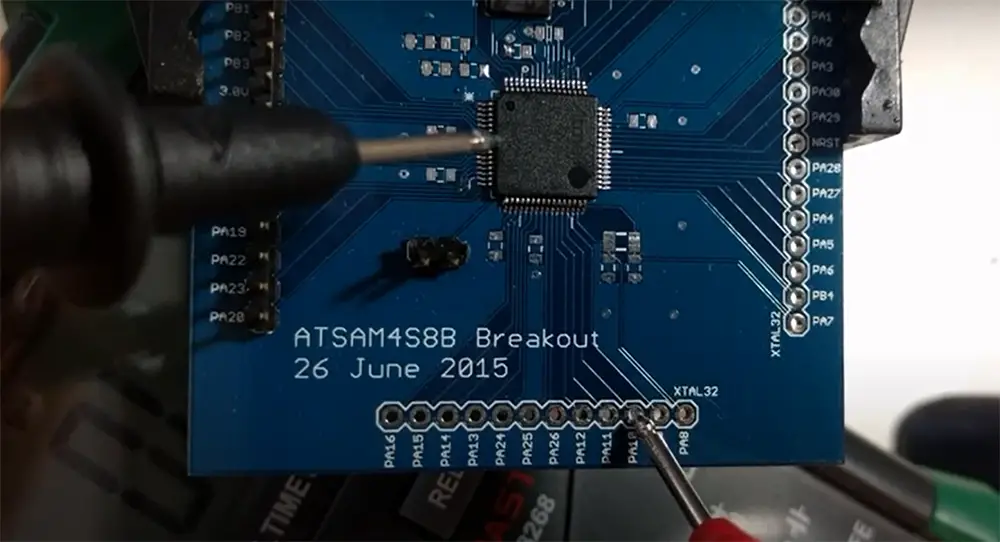
Integrated circuits are used to perform specific tasks in an embedded system, such as controlling motors or reading sensor data. They can also be used to amplify signals or filter out noise.
Microprocessors can access data from external devices through ports called input/output (I/O) pins.
One advantage of using integrated circuits is that they are often more reliable than microprocessors. If a problem occurs with a microprocessor, it can be difficult to determine the source of the problem. With an integrated circuit, on the other hand, problems can usually be traced to a specific component on the chip. This makes them easier to troubleshoot and repair.
Integrated circuits are also less expensive to manufacture than microprocessors. They are typically smaller in size and consume less power. As a result, they can be used in applications where space and energy consumption are important factors.
Comparison between Microprocessors and Integrated Circuits
This table aims to compare the two components based on various indicators to provide a better understanding of their differences.
| Indicator | Microprocessor | Integrated Circuit |
|---|---|---|
| Definition | A Central Processing Unit (CPU) that executes instructions | An electronic circuit that contains multiple components on a single chip |
| Functionality | Executes instructions, processes data, and controls input/output operations | Performs specific functions such as amplification, filtering, or signal generation |
| Architecture | Von Neumann or Harvard | Custom or standard |
| Power consumption | Higher | Lower |
| Cost | Higher | Lower |
The table below compares microprocessors and ICs based on several key indicators, including definition, functionality, architecture, power consumption, and cost. The information presented can be helpful in understanding the differences between microprocessors and ICs, and how they are used in various electronic devices.
Read more articles to improve your knowledge in electronics:
- Half-Bridge vs. Full-Bridge
- How to Extract Gold from Electronics Without Chemicals?
- How to Build a Prototype Electronic Circuit?
FAQ
1. How is an integrated circuit different from a transistor?
A transistor is a switching device that can be used to amplify or turn off the flow of electricity, depending on how its gate or base terminal is driven in the design. Silicon is also utilized to fabricate an integrated circuit, which includes up to trillions of individual transistors [4].
2. What makes some microprocessors different from others?
Microprocessors can differ in their performance, power consumption, and features. For example, some microprocessors may include a graphics processing unit (GPU) that is used to render images. Others may have special instructions that are designed for specific applications, such as controlling motors or reading sensor data. Some microprocessors also consume more power than others, which can be important if the device is going to be powered by a battery.
3. What is a circuit microprocessor?
A microprocessor is a type of integrated circuit. It is the main processing unit of a computer system and reads and executes instructions that are stored in memory. Microprocessors can access data from external devices through ports called input/output (I/O) pins. They usually communicate with integrated circuits using special buses designed for that purpose.
4. Are microprocessors the same as semiconductors?
A semiconductor is a material that allows electricity to flow more than an insulator but less than a pure conductor, and it may be found in thousands of electronic gadgets.
Also, a semiconductor is a material that allows current to flow more than an insulator but less than a true conductor. Memory chips, microprocessors, and integrated chips are some examples of semiconductors [5].
5. Is a microprocessor an IC?
A microprocessor is not an integrated circuit. A microprocessor is a single chip that contains the core components of a computer.
An integrated circuit, or IC, is a collection of electronic circuits on one small flat piece of semiconductor material, usually silicon. The circuits are interconnected and can perform complex functions such as amplifying signals or controlling motors. ICs are used in computers, televisions, smartphones, and many other devices.
6. What are the advantages of integrated circuits?
Integrated circuits have many advantages over their predecessors. They are smaller, lighter, and more energy-efficient. ICs can perform a variety of functions with just one piece of material, whereas before they required several components to do the same thing. For example, an integrated circuit used in a smartphone performs all necessary functions for that device: it controls the touchscreen display; it manages power consumption from the battery; it lets users listen to music or answer phone calls using speakers or headphones; and much more.
In addition, as technology continues to advance at a rapid pace, new devices require ever-smaller features. A microprocessor may be able to function correctly on a silicon wafer measuring only inches across but would not work inside your smartphone – that has a much smaller form factor. To meet the demands of ever-shrinking devices, manufacturers are turning to increasingly complex integrated circuits that can fit more functions into a smaller area.
7. How does a microcontroller differ from a microprocessor?
A microcontroller is a type of microprocessor. They are both single chips that contain the core components of a computer, but they have different functions. A microcontroller is designed for embedded systems — devices like home appliances, automobiles, and industrial controls that need to interact with the real world. A microprocessor, on the other hand, is intended for general-purpose computing tasks. For example, most desktop and laptop computers use microprocessors as their main processing unit.
Microcontrollers usually have fewer features than microprocessors. This makes them cheaper to manufacture and allows them to be used in more applications. They also consume less power, making them ideal for battery-operated devices. Microcontrollers can generally only execute one program at a time, while microprocessors can run multiple programs simultaneously.
Most microcontrollers are programmed in a low-level language like Assembly or C. This requires more expertise and knowledge than programming in higher-level languages like Java or Python. However, this also gives developers more control over how the chip functions and allows them to optimize its performance for a specific application [6].
8. How does an integrated circuit work?
An integrated circuit works by routing electrical signals through a network of interconnected transistors. Transistors are essentially tiny switches that can be turned on or off, allowing or preventing the flow of current through them.
By controlling the flow of current through different transistors, you can create logic gates — basic building blocks of electronic circuits. Logic gates can be combined to form more complex circuits, which in turn can be used to perform various functions such as amplifying a signal or controlling a motor. ICs typically contain dozens or even hundreds of these logic gates, which is why they can perform so many complex tasks.
The layout and design of an IC’s circuitry are known as its “circuitry pattern”. This pattern is typically burned into the chip using a technique known as photolithography, which involves shining light through an optical pattern onto the chip’s surface. This pattern is like a map that tells the current where to go and how fast or slow it should travel when performing different functions [7].
Because ICs contain thousands of transistors connected in intricate circuitry patterns, they must be manufactured carefully to ensure their electronic properties are consistent from one device to another. If even just one transistor malfunctions during production — due perhaps to dust or other particles getting into the machine — then that can cause errors in any circuits downstream from it on the same silicon wafer (the circular slice out of raw material used for making semiconductor chips). Manufacturers use various techniques such as redundancy within each circuit so that if one transistor fails, the chip can still function.
To meet the demands of ever-shrinking devices, manufacturers are turning to increasingly complex integrated circuits that can fit more functions into a smaller area.
For example, many modern cars contain an IC called an “engine control unit” (ECU) that performs a variety of tasks such as regulating the engine’s speed, monitoring its performance, and handling emissions controls.
The ECU is just one example of an IC being used in automotive applications. As semiconductor technology continues to advance, we can expect to see even more complex and powerful ICs appearing in everything from cell phones to medical implants.
Useful Video: how is a microprocessor different from an integrated circuit
References:
- https://en.wikipedia.org/wiki/Integrated_circuit
- https://en.wikipedia.org/wiki/Microprocessor
- https://resources.pcb.cadence.com/blog/2020-microprocessor-vs-integrated-circuit-what-s-the-difference
- https://www.quora.com/What-is-the-difference-between-transister-and-integrated-circuit
- https://www.investopedia.com/ask/answers/042115/what-are-main-types-chips-produced-semiconductor-companies.asp
- https://www.totalphase.com/blog/2019/12/microcontroller-vs-microprocessor-what-are-the-differences
- https://linearmicrosystems.com/integrated-circuit-work





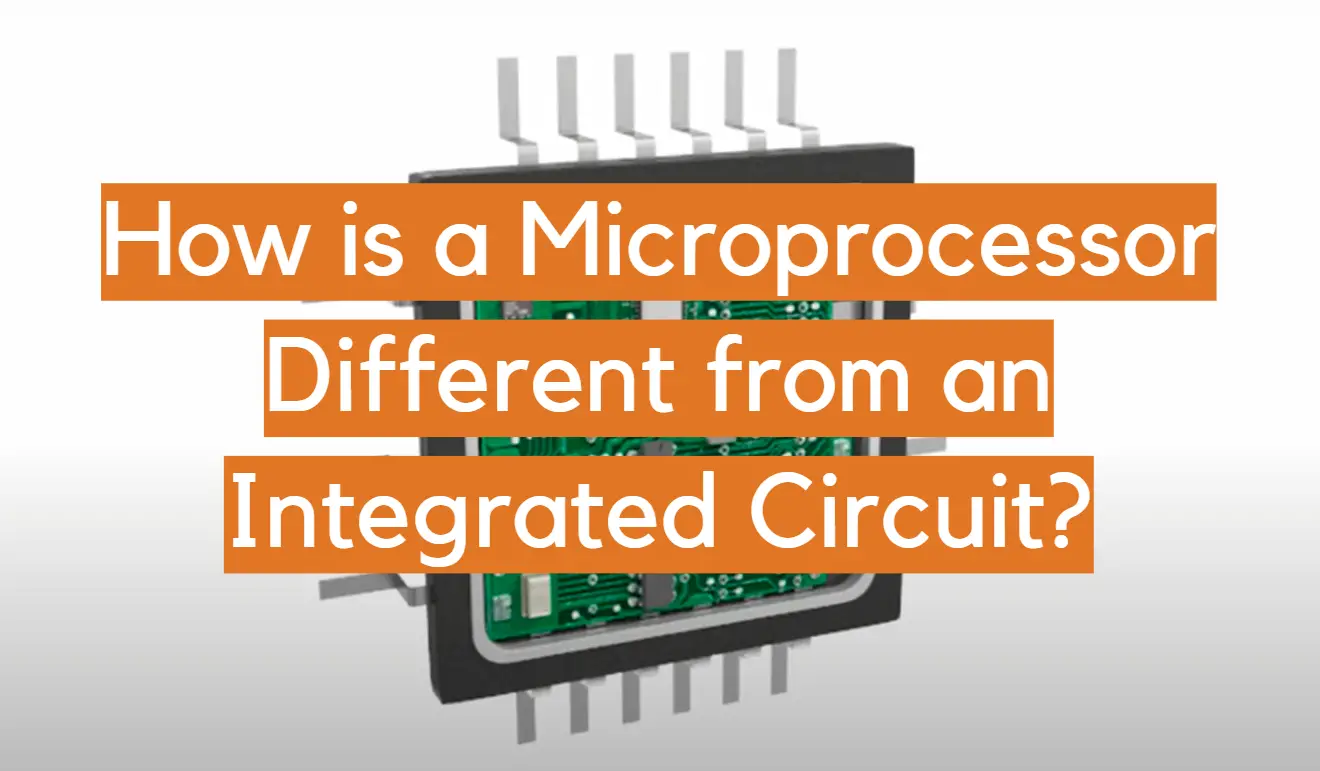





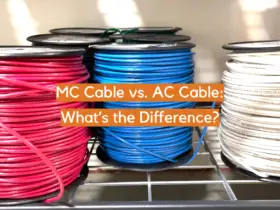

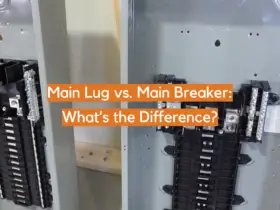
When I started learning about electronics, one of the first things that I learned was the difference between processors and microprocessors. At the time, I didn’t really understand what they were or what they did, but I knew that I wanted to learn more. So, I started reading about them and trying to learn how they worked.
Processors are the heart of any electronic device. They are responsible for performing all of the calculations and tasks that the device needs to do. Microprocessors are a type of processor that is designed to be used in small devices like smartphones and tablets. They are smaller and use less power than other processors, which makes them ideal for mobile devices.
I think it’s important for everyone who wants to learn about electronics to start by learning about processors and microprocessors. They are the foundation on which all other knowledge is built. Once you understand how these devices work, you can start learning about specific circuits and components and how they are used in different applications.
I prefer microcontrollers to integrated circuits because they are more versatile. A microcontroller can be programmed to perform any number of tasks, while an integrated circuit is limited to the functions that its manufacturer has designed it to perform. This makes microcontrollers ideal for applications where flexibility is important, such as robotics and home automation.
I believe that semiconductor microprocessors are one of the most important inventions of our time. They enable computers to process vast amounts of data at incredibly high speeds, and have revolutionized the way we live and work. Without them, many of the technologies we take for granted – from smartphones and tablets to medical imaging devices – would simply not be possible. That’s why I’m so curious about how these tiny, powerful chips are made and how to use them.